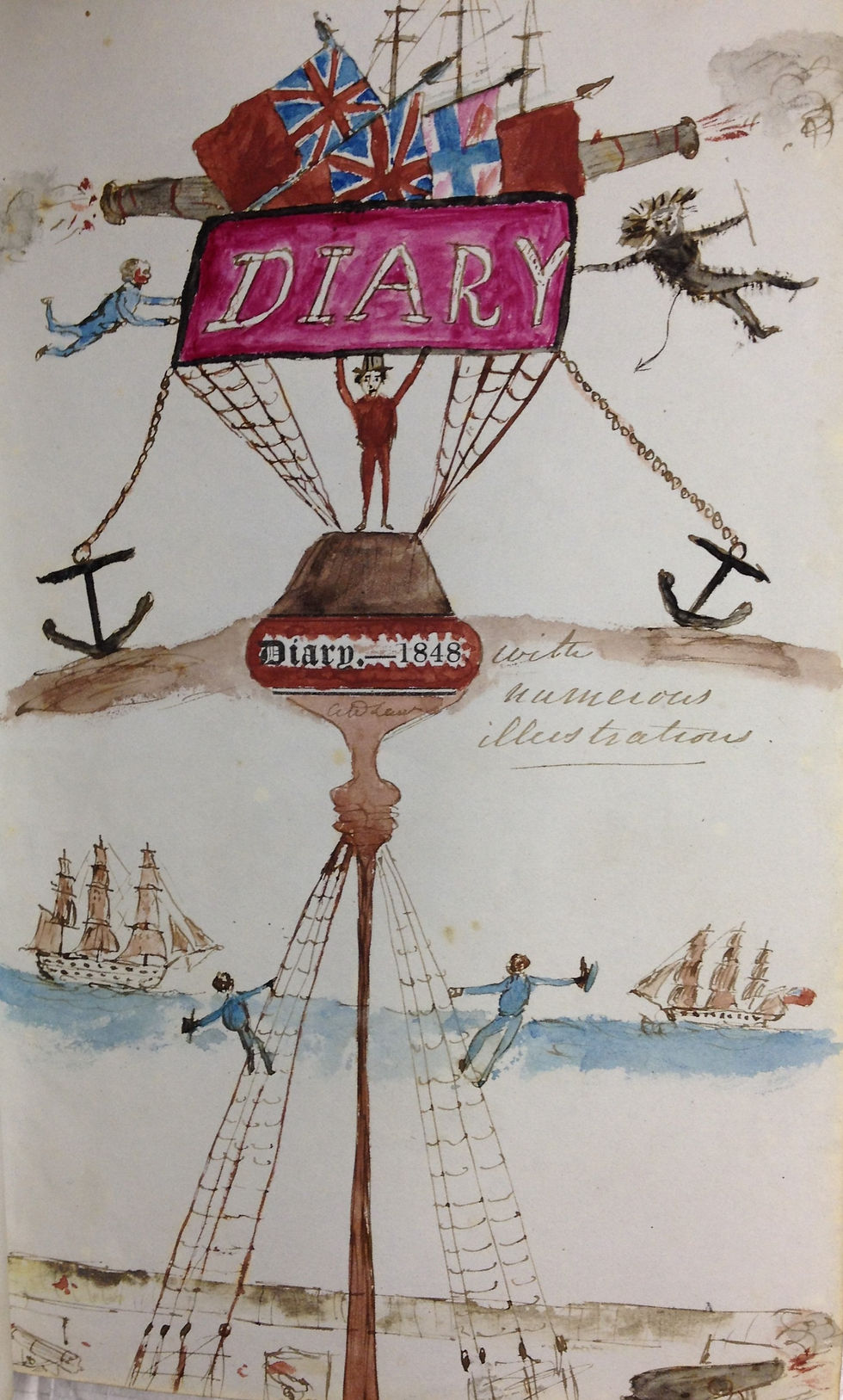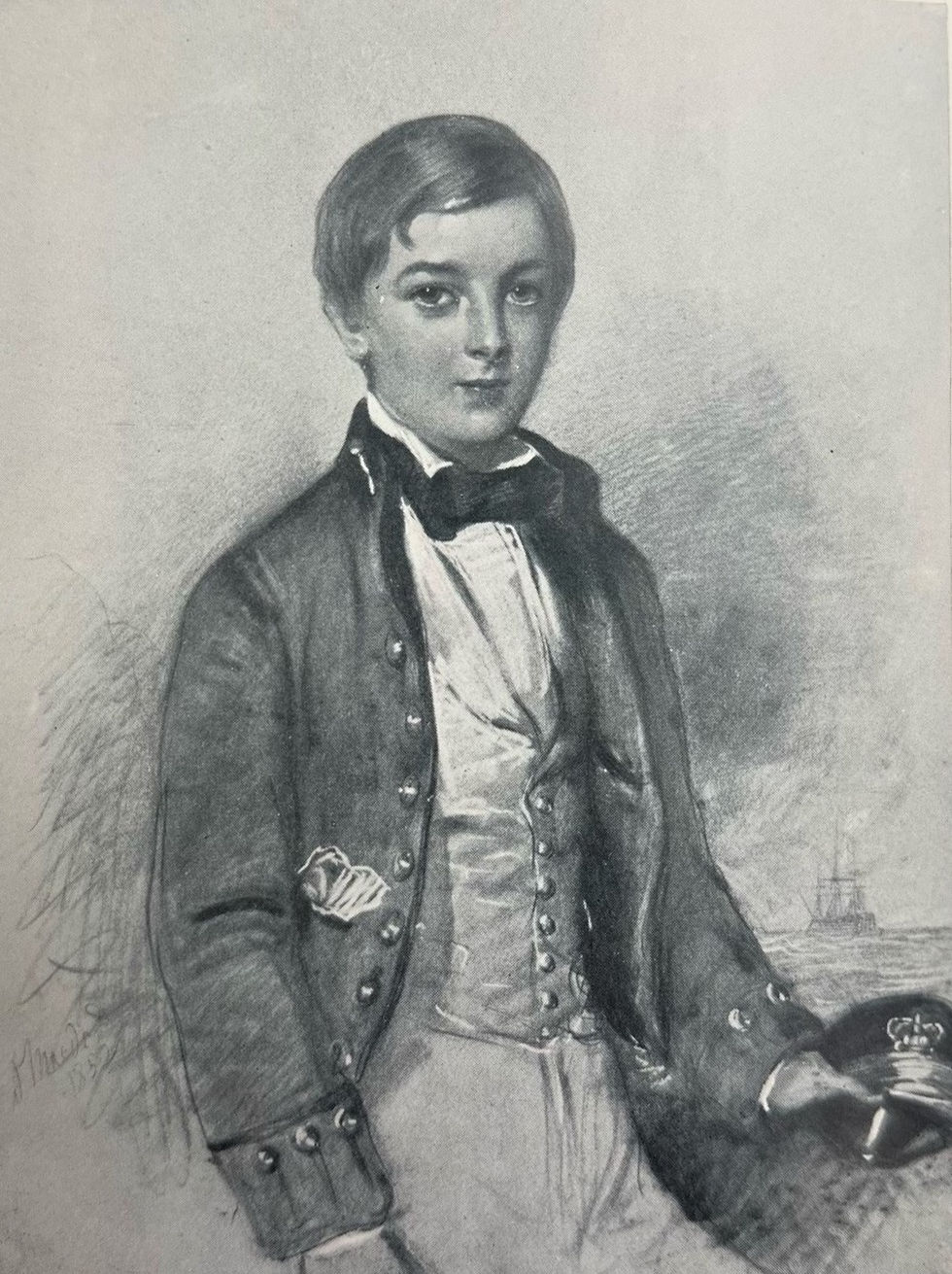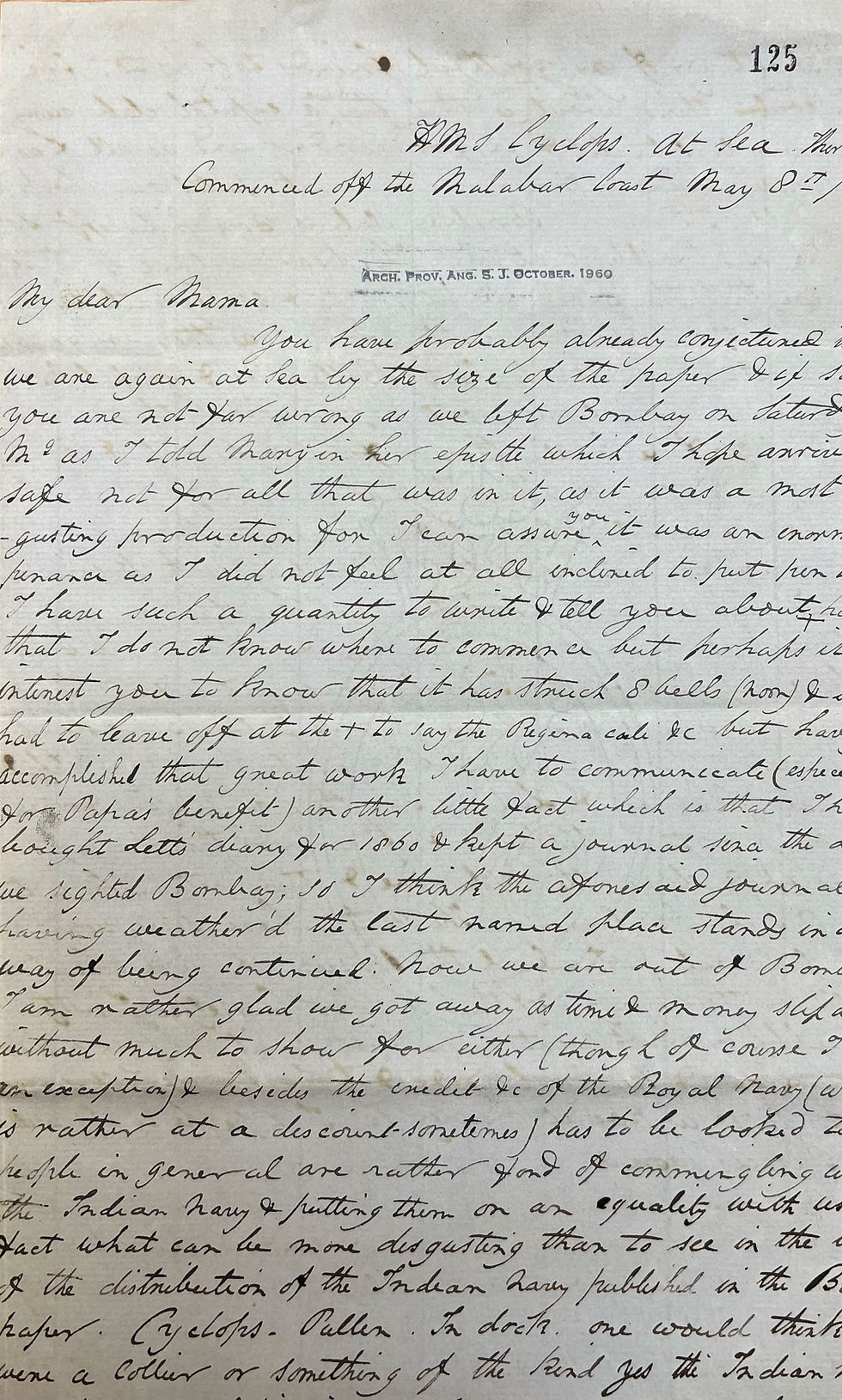Jesuit Sailors: Fr Law & Fr Kerr
- Alexander Taylor
- Apr 20, 2023
- 4 min read
In previous centuries, it was not uncommon for pious Catholic boys to enter the Society of Jesus as novices following their secondary school education. Candidates routinely entered the order before their twentieth birthday; however, this was not the case for every young man. In the archives, we collect, preserve and make available the personal papers of deceased Jesuits. Through cataloguing and re-housing these collections, we have discovered that prior to entering the Society several Jesuits led remarkable, seaworthy lives in the Royal Navy during their teenage years.

Augustus Henry Law was born on 21 October 1833 at Trumpington, a village near Cambridge. His father, The Honourable William Towry Law, was an Anglican clergyman. On his return home from boarding school in 1845, Augustus spent several days in London with his uncle, Lord Ellenborough, then first Lord of the Admiralty. Ellenborough wrote to the boy’s father that he should consider a career in the Royal Navy for his precocious son. Thus, Law spent the next eight years in the Royal Navy, from the ages of twelve to twenty. During this experience, he made several voyages and circumnavigated the globe. He served aboard the H.M.S Carysfort, H.M.S Hastings, H.M.S Amazon, H.M.S Encounter as well as H.M.S Excellent, and was promoted to Lieutenant during the latter part of his career.

In our collection, we have a number of documents connected to Augustus’s exhilarating time at sea. Of particular interest are his meticulous diaries kept between 1847 and 1853. One of the early entries in his 1847 diary confirms that he was a naval cadet on the H.M.S Carysfort, which he joined in March 1846 at the tender age of twelve; he was later promoted to midshipman in February 1847. The diaries include vibrant illustrations, mostly concerning observations of life on-board a ship and the diverse range of sights he saw. His entry from the 15 January 1851 is particularly interesting, as it includes a sketch of the southwestern side of the Kowloon Fort in Hong Kong, which the Chinese government began building at the very tip of the Kowloon Peninsula in 1843.
During his time in Hong Kong between 1850-1851 on board H.M.S Hastings, he describes Christmas Day of 1850 with a vivid and rather sombre account of the day’s activities. An extract from the diary is below.
My 4 to 6 watch. Dined with Lutterel at 6.40. All hands having dined at five. Christmas Day was passed the same as any other nautical Christmas (viz, in drunkeness and riot) & in the middle of it all at 4.30 the Admiral’s joiner, an old man (William Hammond) died of fever, the poor old fellow went off very quietly and all he said was “that he wanted to sleep”.
Towards the end of Augustus’s diary from 1852-1853, during his time on HMS Excellent, he decided to leave the Royal Naval and spent time deliberating a calling to religious life. On 15 January 1854, Augustus joined the Society of Jesus, and was ordained a priest eleven years later in 1865.

Henry Schomberg Kerr was born on the 15 August 1838 at the Rectory, Dittisham, the son of Lord Henry Kerr and Louisa Dorothea, daughter of the Honourable Sir Alexander Hope. His father was an Anglican minister for the Parish of Dittisham, later converting to Catholicism in 1852, shortly followed by his wife and five of their children.
Following his education at Winchester College, Schomberg (as he was affectionately known) was appointed to his first ship on 15 July 1852, the H.M.S Vengeance. He was to commence this newfound life as a naval cadet, joining the following month in August. He later served as midshipman in the Crimean War (1853-1856) and his early promotion to the rank of commander at the age of 28 gave promise to a brilliant professional career. He later served on the H.M.S Phaeton in 1863 and the log book for the H.M.S Duncan states that he joined the ship on 26 July 1864 at Halifax, Nova Scotia, as lieutenant. His last ship was to be the H.M.S Lily, where he served as commander and returned the ship to his native England.
The British Jesuit Archives retains a substantial reference library, and during the research for this blog the Cataloguing Archivist made use of Mrs Maxwell-Scott’s detailed biography ‘Henry Schomberg Kerr, Sailor and Jesuit’. This gripping account provides a comprehensive time-line of Schomberg’s career in the Navy. The author makes it clear that few personal papers have been preserved or were unfortunately lost to history for this period of Law’s life. In the absence of letters or journals, Maxwell-Scott made use of a short paper Schomberg nostalgically wrote in 1895 recounting his life in the Navy to commemorate his friendship with the late Admiral Sir George Tryon. It tells of a young boys’ excitement at sea with his fellow companions, and concludes with his entry into the Society of Jesus.

A letter that does remain in the archives is one addressed to his mother covering the period of 8-16 May 1860. It provides an interesting account of mid-nineteenth century Bombay (known now as Mumbai), Poona (known now as Pune) and Colombo in Sri Lanka from a European perspective. Schomberg describes Bombay’s bustling and vibrant streets, which he likens to Calcutta (known now as Kolkata) and of him having a ‘glorious spell at Bombay’. He was seemingly less impressed with Poona and that other than the old town, there was little to see and do. Contrastingly, he finds the old Colombo fort very impressive, with the luscious countryside surrounding it pleasing. While docked at Bombay, Schomberg recalls an amusing anecdote when the ship’s theatrical party performed at the city’s theatre for charitable purposes, where they raised a rough total of £40 after paying their expenses! Lastly, the document tells of every-day life on-board a naval ship, including Schomberg’s responsibilities during watch-keeping, and reassuring his mother that ‘this is a very comfortable ship, as we have very jolly men!’.
Schomberg’s naval career concluded in 1867 when the 29 year old became convinced that God had called him to religious life and to the work of the ministry. He left behind a life of status and worldly adventure and focused instead on the grace of his future vocation. He entered the Society of Jesus, joining the novitiate at Manresa House, Roehampton, in September 1867.
If this brief overview of these men is of interest to you, or if you have any further questions on any other parts of the archive, please do not hesitate to contact us at archives@jesuit.org.uk


Kommentare